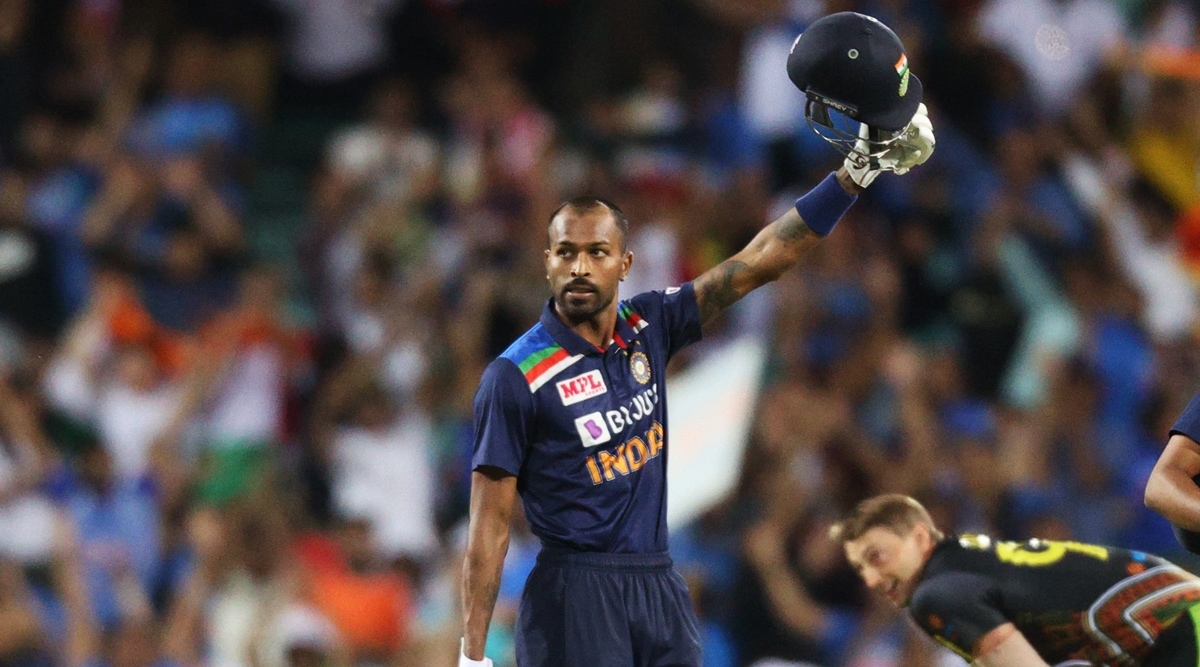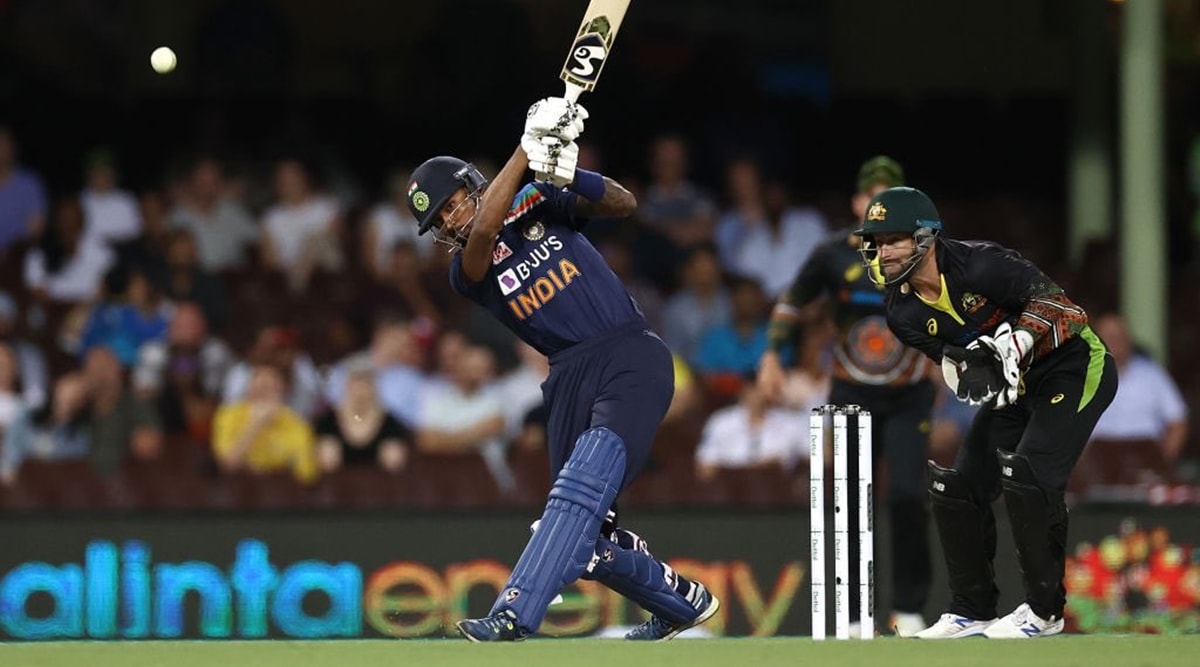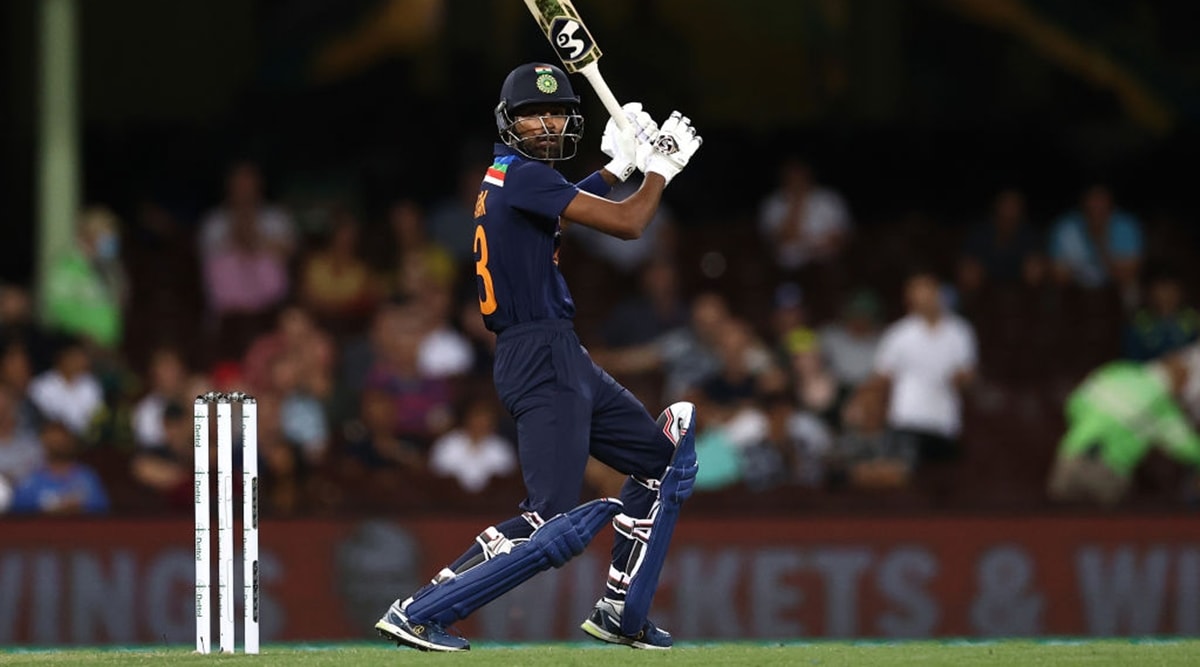 Hardik Pandya has been in imperious form with the bat in India's tour of Australia. (Reuters)
Hardik Pandya has been in imperious form with the bat in India's tour of Australia. (Reuters)Sixty to seventy batting videos of Hardik Pandya wirelessly dropped into Jitender Singh’s phone. Then came a text: “Is everything okay, coach?”
Jeetubhai tapped up each video, carefully watched with increasing satisfaction and typed out his reply, “Yes all good”. It was June end, and coach Jitender had returned to his village after a month of training with Pandya, who was still working at nets in Baroda. “The deal was if I saw something not right in those videos, I will return to Baroda. It wasn’t needed and he (Pandya) could happily go to his wife who was expecting a child; everything was fine with his batting,” Jeetubhai says.
“I go really deep in my batting. I really like to know the factors which I am working for. [For me] maintaining shape is more important. I keep working on my technique,” Pandya said this IPL.
It’s a stance and technique created for (and by) the six-lust of our times. Pandya has stripped batting to its essence: balance, eyesight, fast hands. The aspects that he leaves out are as fascinating as the ones he retains. He cuts out the much-revered positive strides; he doesn’t take a stride forward or back. There are no unnecessary tiny feet movements that can upset balance. He just leans forward or back with his knee-flex, driving through the hips, without a stride – a minimalistic explosion.
Some like George Bailey and Shivnarine Chanderpaul start from unconventional positions just to get to conventional side-on slots at the time of ball release. An unnecessary shuffle can creep in for others or the hands can move wider than ideal for the downward bat-swing. But Pandya’s batting is devoid of these extra appendages.
Pandya’s balance component has a few ingredients: the knee-flex that allows him to spring off from the balls of his feet, the subsequent postural-sway that allows a smooth transfer of weight and makes feet movement almost unnecessary, and the associated hip-turn that powers the bat to and through the contact zone. All this done seamlessly with a balletic fluidity to produce an aftermath of wonder.
“The head, the feet and the hands” are what Jeetubhai watches, his checklist when Pandya starts batting. He remembers when Pandya discussed with him a couple of seasons ago about the new position at stance – around the off stump, with a small trigger movement that at times takes him even outside off, and deep inside the crease.
 Hardik Pandya relies on an open stance which allows an unrestricted view of the ball. (File)
Hardik Pandya relies on an open stance which allows an unrestricted view of the ball. (File)
“He has that cricketing intelligence. With his batting, he realised the need to create angles. He also stands deep in the crease with that guard – he told me that he doesn’t have to worry about yorkers and bouncers,” the coach says. “We worked on getting in a stable, steady position. But fundamentally, he hasn’t changed much. The load-up, the way he holds his bat, the bat-swing are like before, so we didn’t have to worry much. I just told him, ‘just have a method to keep out the full balls on the middle and leg’.”
“The logic in this stance now is that it’s not so easy to get that yorker at the base of stumps – as he is almost by the stumps. With bouncers, because he is so back, he gets extra time and the bowlers try to pitch the ball fuller for the bouncer to trouble his head, but it’s not easy to get the ball to bounce from a fuller length. If they bang it short, middle of the pitch, because he is back, it almost sits up and he has more time to cut and pull.”
The open stance allows an unrestricted view of the ball that is about to be released. Since the shoulders are already a touch open, a batsman can avoid the reflex-jerk – that can invariably happen in a more conventional stance to a bouncer – which upsets the stillness of the head.
“The head position is key,” Jeetubhai says. “Both eyes are level, which means the head isn’t tilted and he watches the ball release with his right eye.” That right eye preference means the shoulder will face the non-striker, with his hips also slightly open.
From the hips to the flexed knees, to the weight on the balls of the feet – as the late Martin Crowe would often say – the rest of Pandya’s stance retains a natural fluidity.
****
 Hardik Pandya helped India seal the T20I series against Australia with a 22-ball 42. (BCCI)
Hardik Pandya helped India seal the T20I series against Australia with a 22-ball 42. (BCCI)
It’s fascinating that of all the batsmen in the modern era, it’s Pandya who has taken to Crowe’s urging to move towards off stump in T20 (and while in the hitting zone). The former classicist, who was ever-open to innovation, would talk exactly what Pandya does now – about a stance around off- stump and deep inside crease. “If I am facing someone like Glenn McGrath, I would stand on off or even outside,” Crowe told this writer in 2008. “If he bowls on the stumps, good luck to him as I am confident about my legside play. And I have taken out his strength of hitting the off-stump and forced him to go wider and even change angle from where he bowls on the crease. I am amazed more batsmen don’t try it out; it will free them up.”
Pandya has freed himself up. The knee-flex that allows batsmen to a position on the balls of their feet (as opposed to arch, heel or toes) was another Crowe theme. “The balls of feet are where the energy and springy muscle is”. Pandya does that. His legs don’t remain straight, instead they flex, allowing him to spring off the balls of his feet.
The one thing that Crowe would fuss most is feet movement and strides. Pandya doesn’t; he arches to another stylist from the past, Pakistan’s Majid Khan, who once challenged his English county teammates that conventional footwork was unnecessary and took them to nets to show it. With a wider base (feet spread out more at stance), and just the posture-sway (leaning forward and back) to transfer weight, he proceeded to slam the gobsmacked bowlers. Pandya does it.
Which brings us to his hips. He bats with his hips, if you will, generating furious bat speeds through his swing. “He turns his back leg from his hip and not from his knee, when he is driving through the line,” Jeetubhai says. This allows unimpeded movement for the bat-swing and greater speed to scythe through the line. “When it’s short, he will press down on that front leg, and load up on the back leg, sort of twist and turn it quickly and with his already open stance, it allows a free swing of the bat for the pull. He has trained for hours, for months, and now it’s all a natural reactionary movement. So, now for the main, I look for the head position, the feet and the hands.”
Couple of years ago, the coach felt that Pandya’s bottom hand was taking over a bit too much. “That affects the angles and areas he can access. So, we got his top hand back into the grip more. Little stuff like that. He always looks to hit through the line. Krunal has ‘watch the ball’ written down on his bat, Hardik has written it in his brain, his whole set-up helps him in watching the ball till late and then he reacts.
“I think the bowler is going to bowl here but eventually I play the merit of the ball. I keep it simple.” Pandya said last month. The bowlers tend to fire it wider outside off but he isn’t predetermining too much, the way he sets himself up at the crease allows him to squat down with his knee-flex, reach out and slice it over point.
For a while in his career, Pandya seemed like he craved attention, without knowing what it was in him that he wanted everyone to look at. Resultantly, he got the attention but not engagement but in recent times, he has made it clear to himself and to everyone that he wants the attention to be on his cricket – and now he has us hypnotically hooked.